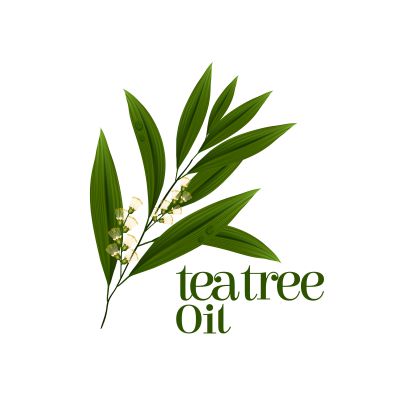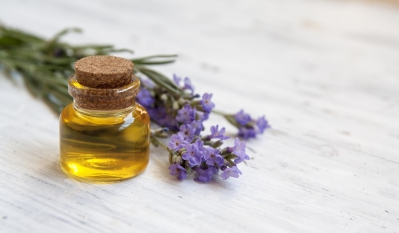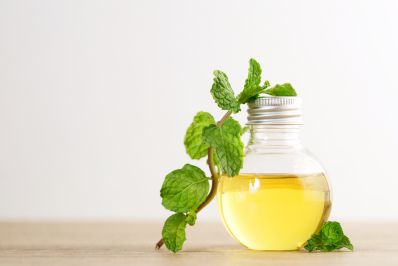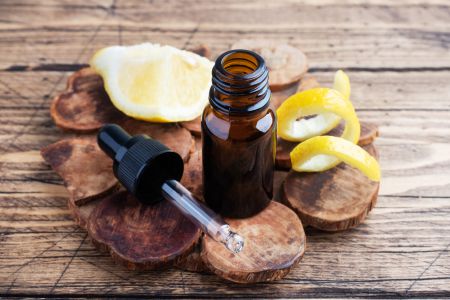Tea tree oil is an important essential oil derived from tea tree (Melaleuca alternifolia), which is native to Australia. This tea tree should not be confused with the plant, whose leaves are utilized for making tea (green, oolong, black etc). It has several health importance and has been traditionally used for wound healing.
Characteristics
- It is a mixture of terpenes and hydrocarbons
- It is liquid in room temperature
- It is pale yellowish to colorless
- It has a spicy and earthy odor
- It is partially soluble in water
- It has seen that it is soluble in alcohol
- It can be stable and preserved for several weeks without affecting its nutritional composition, physical and chemical properties if the storage condition is maintained properly
- It can be decomposed if heated at a high temperature and produces irritating vapor and acrid smoke
Nutritional profile
It is rich in various biologically active compounds which are responsible for its antioxidant, anti-inflammatory, anticarcinogenic and antifungal activities. These compounds include terpinen-4-ol, α-terpinene, terpinolene, α-pinene, α-terpineol, γ-terpinene, p-cymene, aromadendrene, globulol and linonene
Easy method of preparing tea tree oil
It can be prepared very easily at home by simply using crock pot. Below listed steps are required for preparing tea tree essential oil –

- At first tea tree leaves are collected and should be cleaned properly for removing dust or dirt
- Then the leaves should be chopped and washed properly
- After that, the leaves should be placed within the crock pot
- Then the pot should be filled with water
- Pot should be covered with a lid in upside down, which is related with ensuring the dripping back of evaporating water within pot
- It should be kept in mind that the inverted lid should be on top of water level
- Then it is subjected for boiling
- After that the crock pot is allowed for cooling
- Then the cooled crock pot should be kept in the refrigerator for accumulating oil on water surface
- Finally, the surface oil (the tea tree essential oil) should be scooped off and kept in a dry and clean glass jar
- It should be stored properly (especially in a cool and dry area) for enhancing its self-life
Health benefits
Antioxidant activity
- It has strong free radical scavenging capacity that helps to reduce free radical concentration within body very effectively
- It is coupled with decreasing the oxidative damages of body
- It spares several important biochemical substances of body (like lipids, proteins, nucleic acids etc) from oxidation and helps to sustain their functionality

Anti-inflammatory activity
- Terpinen-4-ol component of tea tree oil is the main substance responsible for exerting anti-inflammatory activities that help to prevent inflammation, pain and swelling
- Its anti-inflammatory as well as soothing effects help to reduce the prevalence of irritated as well as painful skin
- It has seen that exposures to allergen often associated with develop itchy, red and painful skin, which can be easily treated by applying tea tree oil
Antimicrobial activity
- Tea tree oil is considered as an important essential oil, which can kill a variety of fungus (yeast and molds)
- It has seen that it is most effective against Candida albicans (yeast) and reduces the prevalence of infections caused by Candida albicans, like mouth, skin, throat and genital infections
- It helps to cure infection of eyelashes caused by mite
- It also exhibits antiviral activities. Tea tree oil along with eucalyptus oil effectively exert antiviral effect against herpes simplex virus
- It has strong antibacterial activity as well, especially against Escherichia coli. It mainly helps to kill bacterial cell by inhibiting their cellular respiration and by increasing their membrane permeability
Role on skin
- The soothing and healing effects of tea tree oil help to promote skin health
- Its antiseptic effect is responsible for combating oily skin
- It also helps to prevent the dryness of the skin by decreasing the prevalence of skin irritation and itching
- It helps to treat eczema
- It is also related with reducing the prevalence of acne especially on face, arm, chest and back. Its antimicrobial activities are mainly responsible for preventing acne by killing the causative bacteria
- It is associated with reducing psoriasis
- It helps to improve the symptoms of scabies (contagious skin infection caused by Sarcoptes scabiei)

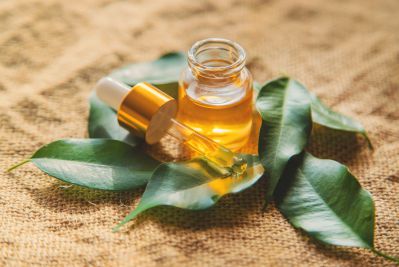
Role on hair
- Tea tree oil plays an important role in nourishing and moisturizing the hair and helps in optimum hair growth
- It also helps to increase the hair volume
- It has seen that application of tea tree oil along with some other carrier oil (such as coconut oil or olive oil) on scalp is greatly related with reducing hair fall
- It acts as an effective cleanser and conditioner for hair that helps to soothe the dry scalp
- It helps to treat dandruff by removing dead cells from scalp and by destroying Pityrosporum ovale (yeast responsible for dandruff)
- It also helps to treat head lice
Role on oral health
- Tea tree oil plays significant role on promoting oral health
- It has seen that it helps to prevent the growth and adhesion of some bacteria like S. mutans and P. gingivalis, which are responsible for developing cancers in oral cavity
- It is beneficial for preventing gingivitis (gum inflammation)
- It also helps to reduce oral bleeding
- It is associated with inhibiting bad mouth odor and helps to refresh the breath

Role on wound healing
- Antimicrobial property of tea tree oil makes it able to heal any wound effectively
- It is very useful in treating minor scratch and cuts
- It also has antiseptic effect which helps to reduce the susceptibility of developing infection. It also helps to prevent the entry of germs within the bloods stream through the injured area
- It helps to kill S. aureus, (bacteria), which is responsible for developing infection in open wound
- Its anti-inflammatory activity and its ability for enhancing the functionality of WBC help to facilitate the healing process
Medicinal application
- It is used for inhibiting Athlete’s foot
- Tea tree oil along with methyl-sulfonyl-methane and hyaluronic acid is used for improving the symptoms of hemorrhoid
- It is used for preventing cold sores as well
- It is used for reducing pain after cataract surgery especially among those individuals who have dry eyes
- It is used for preventing nail abnormalities caused by fungal infection
- It is used to treat vaginal candidiasis (a vaginal infection caused by yeast)
- It is also used for reducing the susceptibility of trichomoniasis (a sexually transmitted disease caused by Trichomonas vaginalis)
- It helps to treat otitis media, an inflammatory disease of middle ear
- It is used for preventing normal cold and helps to inhibit congestion

General consideration of using tea tree oil
- It should not be applied directly to the skin
- Additional care must be taken while using tea tree oil around the eye as it may cause eye irritation and redness
- It exerts toxic effect when swallowed. So, it should not be ingested

Source:
de Groot, A.C. and Schmidt, E., 2016. Tea tree oil: contact allergy and chemical composition. Contact Dermatitis, 75(3), pp.129-143.
Kallis, P.J., Price, A., Dosal, J.R., Nichols, A.J. and Keri, J., 2018. A biologically based approach to acne and rosacea. Journal of drugs in dermatology: JDD, 17(6), pp.611-617.
Lam, N.S.K., Long, X.X., Griffin, R.C., Chen, M.K. and Doery, J., 2018. Can the tea tree oil (Australian native plant: Melaleuca alternifolia Cheel) be an alternative treatment for human demodicosis on skin. Parasitology, 145(12), pp.1510-1520.
Pazyar, N., Yaghoobi, R., Bagherani, N. and Kazerouni, A., 2013. A review of applications of tea tree oil in dermatology. International journal of dermatology, 52(7), pp.784-790.
Singh, R., Vadhana, P., Bhardwaj, M., Vinodh, R. and Sinha, K., 2016. Comparative antimicrobial activity of tea tree oil (Melaleuca Oil) and common topical antimicrobials against bacteria associated with wound and topical infections. Pharm. Anal. Acta, 7, p.513.
Thomas, J., Carson, C.F., Peterson, G.M., Walton, S.F., Hammer, K.A., Naunton, M., Davey, R.C., Spelman, T., Dettwiller, P., Kyle, G. and Cooper, G.M., 2016. Therapeutic potential of tea tree oil for scabies. The American journal of tropical medicine and hygiene, 94(2), pp.258-266.
Yadav, E., Kumar, S., Mahant, S., Khatkar, S. and Rao, R., 2017. Tea tree oil: a promising essential oil. Journal of EssEntial oil rEsEarch, 29(3), pp.201-213.
